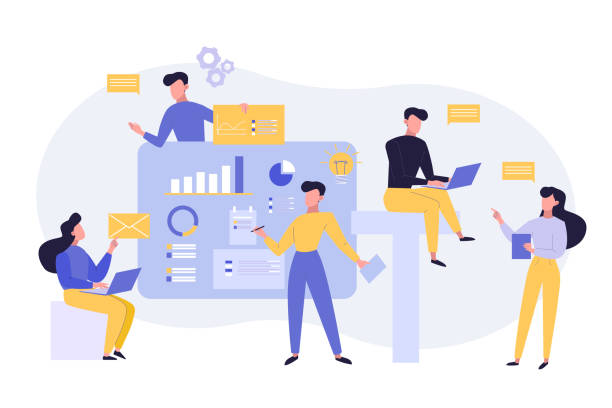Introduction to the Importance of SEO-Optimized Website Design
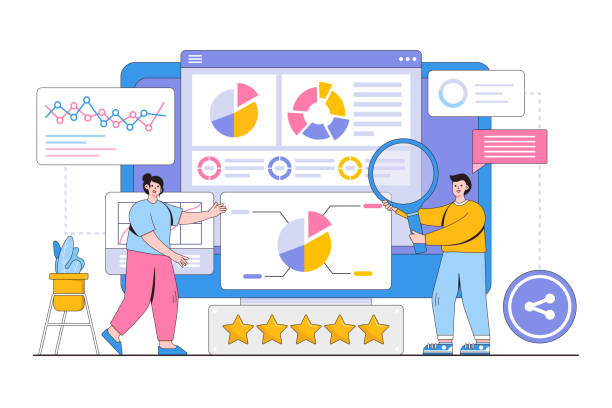
In today’s digital world, having a website is not merely an option, but an undeniable necessity.
However, beyond simply “having” a website, SEO-optimized website design is a critical element for visibility and success in the competitive online space.
A website that is not well-optimized for search engines is like a shop hidden in the back alleys of a city that no one can find.
This educational chapter will help you gain a deeper understanding of SEO design concepts and grasp its importance for your business.
This topic includes various aspects, from the technical structure of the website to the content provided and user experience.
SEO, or Search Engine Optimization, is a process that makes your website appear higher than competitors in organic search results of search engines like Google.
This means more traffic, more visibility, and ultimately, more customers.
Designing a website with an SEO approach from the outset is far more efficient than trying to optimize an existing site that did not follow SEO principles from its foundation.
In fact, every SEO-optimized website design can act as a long-term investment for your digital marketing.
In this process, factors such as site loading speed, mobile compatibility, URL structure, content quality, and internal and external links all play a key role.
A thought-provoking question here might be whether merely having a high ranking is enough, or if user retention on the site should also be considered? The answer is that User Experience (UX) and SEO go hand in hand.
A high-ranking site with poor user experience quickly loses users, which ultimately negatively impacts its SEO ranking.
Therefore, focusing on a user-friendly website that is properly SEO-optimized is the cornerstone of online success.
This is important not only for search engines but also for your users.
Tired of your e-commerce website not generating as much revenue as it could? Rasaweb, specializing in professional e-commerce website design, solves this problem forever!
✅ Increase sales rate and revenue
✅ High loading speed and unparalleled user experience
⚡ Get a free consultation for e-commerce website design
Fundamental Principles of Technical Optimization in Web Design

SEO-optimized website design requires special attention to technical aspects that are often hidden from users but are vital for search engines.
One of the most important of these principles is an optimized and understandable URL structure.
URLs should be short, descriptive, and contain relevant keywords.
For example, instead of “yoursite.com/page?id=123”, use “yoursite.com/services/seo-website-design”.
This not only helps search engines understand the page content but also improves user experience.
Another important technical aspect is the correct use of heading tags (H1-H6) and Meta Descriptions.
The H1 tag should be the main title of the page and used only once per page, while meta descriptions should provide an appealing and convincing summary of the page content that entices users to click.
This specialized section emphasizes the importance of technical ranking factors.
Website loading speed is another critical factor.
Both users and search engines value speed.
A slow site has a higher Bounce Rate and sends negative signals to Google.
Image optimization, code compression (CSS, JavaScript), and caching, are among the solutions for increasing speed.
Furthermore, using the HTTPS protocol is essential for site security and building user and search engine trust.
Google has explicitly stated that HTTPS is a ranking factor.
The internal site structure or “information architecture” should also be such that search engines can easily find and index all pages.
This includes using logical navigation, strong internal links, and an XML sitemap.
In this regard, SEO-optimized website design means paying attention to the smallest technical details that collectively make a big difference in ranking.
Finally, ensuring that your site is mobile-compatible (Responsive) is of high importance, as most searches today are done via mobile devices.
Keyword Research and Its Place in SEO Design
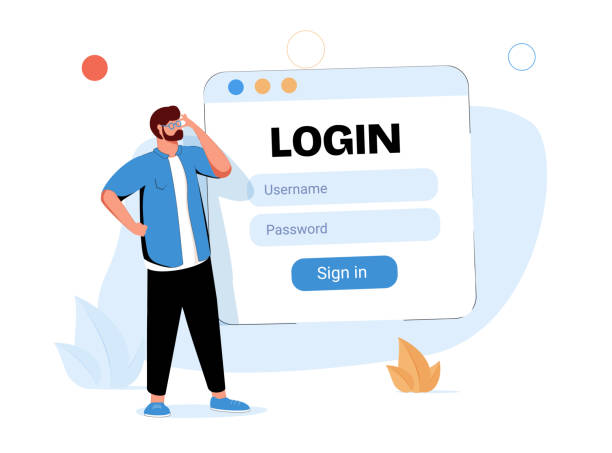
Keyword research is the backbone of every SEO-optimized website design and content marketing strategy.
This process goes beyond merely finding high-volume keywords; it means deeply understanding the language and needs of your target audience.
By identifying the words users type into search engines to find products or services similar to yours, you can tailor your content and site structure to precisely match these needs.
This guide provides a comprehensive approach to effective keyword research.
Using tools like Google Keyword Planner, Ahrefs, Semrush, and Moz Keyword Explorer can help you find high-demand keywords, lower-competition keywords (Long-Tail Keywords), and relevant keywords.
Keyword research not only helps you produce relevant and high-quality content but also influences the overall site structure and page hierarchy.
For instance, each main page should target a primary keyword, while sub-pages can target more related and detailed keywords.
This strategy helps search engines understand the relationship between different pages of your website and, thereby, granting you a better ranking.
SEO-optimized website design without precise keyword research is like building a house without a blueprint.
This table illustrates an example of keyword categorization and their application:
| Keyword Type | Example | User Intent | Application in Site Design |
|---|---|---|---|
| Informational | “What is SEO” | Acquiring knowledge | Blog articles, guides |
| Navigational | “Digikala website” | Finding a specific site | Branding, homepage |
| Commercial Investigation | “Best website design company” | Research before purchase | Service pages, comparisons |
| Transactional | “Buy website design” | Intention to buy or act | Product/service pages, shopping cart |
In this process, you should also pay attention to keyword competition.
Sometimes, targeting keywords with lower search volume but less competition can yield better results in a shorter time.
Finally, competitor analysis is also an integral part of keyword research.
By examining the keywords your competitors rank for, you can discover new opportunities for yourself and improve your SEO-optimized website design strategy.
Logical Site Structure and Navigation for SEO and Users
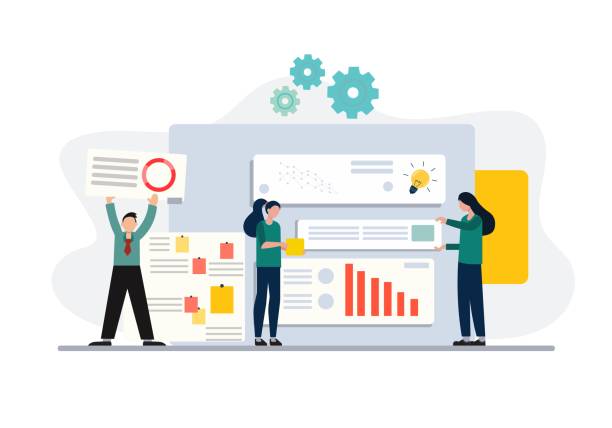
The site’s structure and navigation play a vital role in SEO-optimized website design and also in user experience (UX).
A logical and hierarchical structure helps search engines better understand and index your website’s pages.
Additionally, users can easily find the information they need, which leads to a reduced bounce rate and increased time spent on the site.
A website with a tree-like structure, where we go from the homepage to categories and then to more detailed pages, is ideal.
For example, Homepage > Services > SEO-Optimized Website Design > Web Design Details.
This explanatory section addresses the importance of clear navigation and internal linking.
Internal links not only help transfer SEO authority (Link Juice) between pages but also allow users to easily move around the site.
Using a clear main navigation menu (Header Navigation) and also a footer navigation menu for important links is essential.
Furthermore, using Breadcrumbs (navigation that shows the user’s current location on the site) is recommended for large sites, as it is beneficial for both SEO and users.
Orphan Pages, i.e., pages that have no internal links pointing to them, should be avoided, as search engines cannot find and index them.
In SEO-optimized website design, every page should have at least one internal link to it and one internal link from it to another page.
Moreover, the information architecture should prevent Keyword Cannibalization.
This occurs when multiple pages on your site compete for a similar keyword, which ultimately does not help the ranking of any of the pages.
This problem can be solved by careful keyword planning for each page and organizing content hierarchically.
It’s fascinating to know how a simple structure can have a huge impact on search engines’ ability to understand your website.
Ultimately, a successful SEO-optimized website design prioritizes the site structure in a way that is logical and understandable for both search engine robots and humans.
This means a smooth user experience and strong technical optimization, both of which contribute to increased online visibility.
Are you tired of your company’s website not meeting your expectations? With Rasaweb, design a professional website that truly represents your business.
✅ Increase new customer acquisition and sales leads
✅ Enhance your brand’s credibility and trust among your audience
⚡ Get a free website design consultation!
Content Optimization for Search Engines and User Engagement
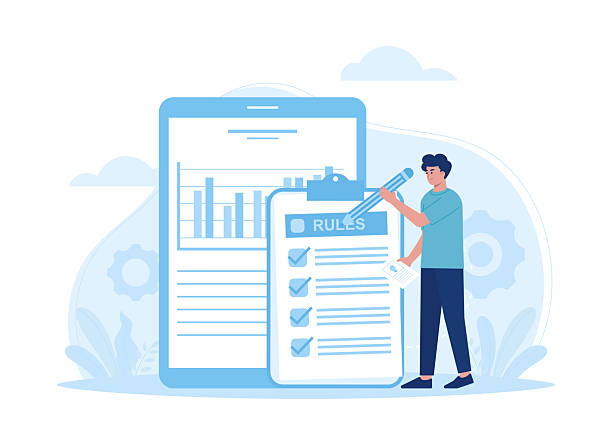
Content is king, and this statement holds true more than ever in the realm of SEO-optimized website design.
Producing high-quality, valuable content relevant to target keywords is the foundation for attracting organic traffic and improving search engine rankings.
Your content should not only be optimized for search engines but also address user needs and questions, providing them with real value.
This educational section shows you how to create content that both search engines and your users will love.
One of the first steps in content optimization is appropriate keyword density; this means target keywords should be naturally and logically dispersed throughout the text, headings, meta tags, and even image alternative text (Alt Text).
However, keyword stuffing should be strictly avoided, as it is not only penalized by search engines but also severely degrades user experience.
In SEO-optimized website design, longer and more comprehensive content usually performs better, as it can cover a wider range of related keywords and be recognized as an authoritative resource.
Nevertheless, content length is not the only criterion; quality, originality, and readability are of paramount importance.
Using subheadings (H2, H3), short paragraphs, lists, and images and videos helps with content readability and encourages users to stay on the page longer.
Your content should be thought-provoking and encourage users to think and interact.
Does your content answer user questions? Does it help them solve a problem? A successful SEO-optimized website design presents content in a way that is engaging and practical for the target audience.
Regular content updates are also an important factor.
Search engines favor fresh and updated content, so reviewing and updating old articles can help maintain and even improve rankings.
Additionally, adding relevant and high-quality internal and external links to the content increases its value for both users and search engines.
The Importance of Site Loading Speed in Ranking and User Experience
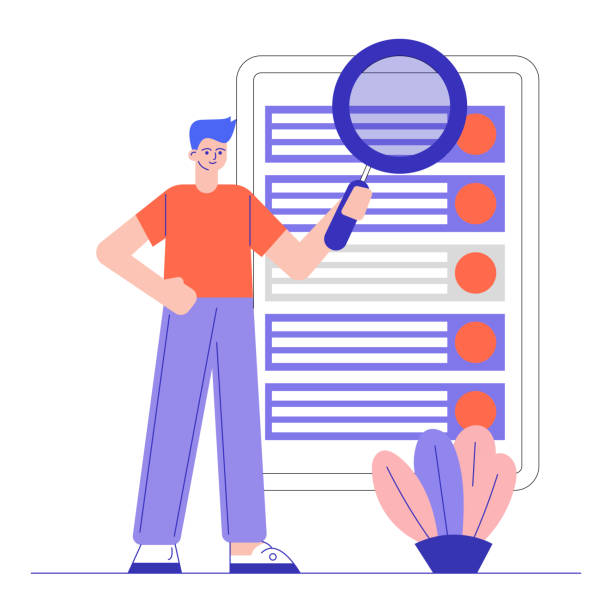
Website loading speed is one of the most important factors in SEO-optimized website design and user experience that is often overlooked.
In today’s world, where users have high expectations for internet speed, even a few seconds of loading delay can lead to the loss of visitors and customers.
Google has explicitly stated that site speed is a ranking factor, especially for mobile searches.
This analytical section discusses how optimizing site speed can contribute to your SEO success.
There are several reasons for the importance of site speed: First, improved user experience; users are more satisfied with sites that load quickly and are more likely to stay on the site and visit more pages.
Second, reduced bounce rate; if your site is slow, users will leave before the page fully loads.
Third, direct impact on SEO; search engines prefer faster sites and give them higher rankings.
SEO-optimized website design should consider speed optimization from the very beginning.
Some key strategies to increase loading speed include:
Image Compression: Heavy images can significantly increase loading time.
Using optimized formats (like WebP) and compression tools can make a big difference.
Code Optimization (CSS, JavaScript, HTML): Removing unnecessary code, compressing, and minifying files can reduce page size.
Using Browser Caching: By storing some of the site’s files in the user’s browser, subsequent visits to the site will be faster.
Choosing Appropriate Hosting: A quality and high-speed hosting (preferably VPS or Dedicated Server) can have a significant impact on site speed.
Using CDN (Content Delivery Network): CDN stores your site’s content on various servers around the world and delivers it from the closest server to the user, which significantly increases loading speed.
These factors all play a role in creating an SEO-optimized website design that is not only optimized for search engines but also provides an excellent user experience.
Tools like Google PageSpeed Insights and GTmetrix can help you analyze site speed and identify issues.
Responsive Design and Mobile User Experience

In today’s world, where a vast portion of internet searches are conducted via mobile devices, having a website with Responsive Design and providing an optimized mobile User Experience (UX) is no longer a competitive advantage, but a vital necessity for every SEO-optimized website design.
Google has explicitly stated with the introduction of Mobile-First Indexing that the mobile version of a site will be the basis for evaluation and ranking of websites by this search engine.
This guide provides comprehensive information on how to achieve this goal.
Responsive design means that your website is capable of automatically adapting its appearance and functionality to the screen size of the device the user is employing (mobile, tablet, laptop, or desktop).
This prevents the creation of separate versions for each device and makes content and SEO management easier.
Factors influencing mobile user experience and consequently SEO are summarized in the table below:
| Influencing Factor | Explanation | Impact on SEO and UX |
|---|---|---|
| Responsive Design | Automatic adjustment of layout and elements based on screen size. | Essential for Mobile-First Indexing, improved ranking, and reduced bounce rate. |
| Mobile Loading Speed | Time required for a page to fully load on mobile devices. | Critical ranking factor, reduces user abandonment. |
| Content Readability | Font size, line spacing, and paragraph breaks for easy reading. | Improves user dwell time, reduces bounce rate. |
| Ease of Navigation | Touch-friendly menus, larger buttons. | Improves UX, helps crawlers find pages. |
| Removal of Intrusive Pop-ups | Pop-ups that cover the entire screen on mobile. | Penalized by Google, reduces UX. |
An SEO-optimized website design that is fully optimized for mobile not only achieves a better ranking in mobile search results but also provides a more enjoyable user experience for visitors.
This means increased engagement, reduced bounce rate, and ultimately, improved conversion rates.
Tools like Google Mobile-Friendly Test help you ensure that your site is well-optimized for mobile.
Internal and External Link-Building Strategies to Increase Authority
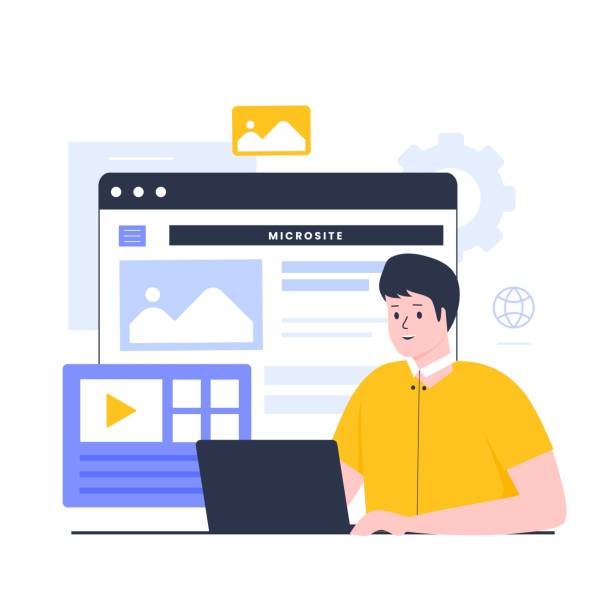
Link building, both internal and external, is one of the most powerful pillars in SEO-optimized website design.
This process means creating connections between the pages of your website and also connecting with other reputable websites.
Search engines use links as a signal for authority and topical relevance.
The more high-quality links point to your site, and the more logical your internal linking structure, the higher your site’s authority and, consequently, its ranking will be.
This specialized section examines both aspects of link building.
Internal Linking: These types of links connect pages within your website to other pages on the same website.
Strong internal linking helps search engines find and index all pages of your site and also distributes SEO authority (Link Juice) throughout the site.
Benefits of internal linking include improved user navigation, reduced bounce rate, and increased time spent on the site.
For an SEO-optimized website design, you should use Anchor Text (clickable link text) relevant and descriptive, that includes the target keywords of the destination page.
For example, if you are linking to a page about “SEO services”, the Anchor Text could be “professional SEO services”.
External Linking or Backlinking: These links point from other websites to your site and are known as “backlinks”.
Backlinks are one of Google’s most important ranking factors, as they act as a “vote of confidence” from other sites.
The greater the number and quality of backlinks, the higher your site’s Domain Authority.
A thought-provoking question in this regard is whether all links are equal? The answer is no.
Links from reputable and relevant sites are much more valuable than links from low-quality or spam sites.
External link-building techniques include creating valuable and shareable content, connecting with bloggers and influencers, and participating in relevant online communities.
It’s no news that link building is a time-consuming and continuous process that requires strategy and consistent effort.
Ultimately, every SEO-optimized website design should have a comprehensive strategy for both internal and external link building to stand out in online competition and achieve higher rankings in search engines.
Are you worried about your e-commerce site’s low conversion rate and not achieving your desired sales?
Rasaweb is your specialized solution for a successful e-commerce website.
✅ Significant increase in conversion rates and sales
✅ Professional and user-friendly design to satisfy customers
⚡ Ready for a transformation in online sales? Get a free consultation!
Using SEO Analytics and Performance Monitoring Tools
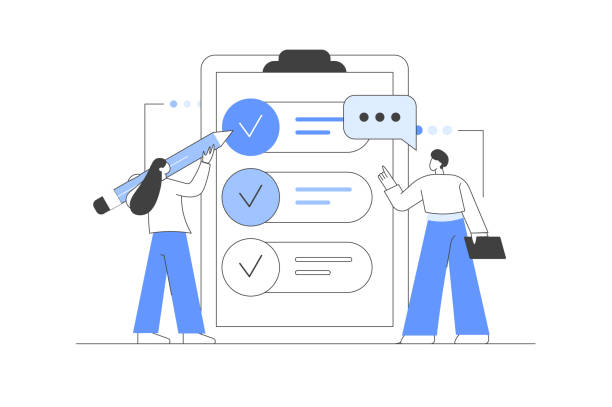
After implementing the principles of SEO-optimized website design, the next step is performance monitoring and analysis.
SEO tools help you track your progress, identify your site’s strengths and weaknesses, and discover new opportunities for improvement.
Without these tools, SEO is like moving in the dark.
This explanatory section introduces some of the most important and practical SEO tools that every SEO specialist or online business owner should be familiar with.
One of the most essential tools is Google Search Console.
This free tool from Google provides crucial information about how Google views your site.
Through Search Console, you can see which keywords your site ranks for, how many clicks and impressions it receives, which pages have errors, identify Crawl Errors, and submit your Sitemaps.
This information is vital for SEO-optimized website design and its continuous improvement.
Another complementary tool is Google Analytics.
Google Analytics allows you to track user behavior on your website.
You can see where users come from, how long they stay on your site, which pages they visit, and what your Conversion Rate is.
Combining data from Search Console and Analytics provides a comprehensive view of your site’s SEO performance and user experience.
This information is highly valuable for adjusting content strategy and optimizing user experience.
In addition to Google’s tools, there are other specialized tools that offer more advanced capabilities:
Ahrefs and Semrush: These two paid tools are the most comprehensive platforms for keyword research, competitor analysis, backlink auditing, and rank tracking.
These tools are essential for deep analytical insights and complex SEO strategies.
Moz Pro: Another SEO tool with capabilities similar to Ahrefs and Semrush, focusing on domain and page authority.
Screaming Frog SEO Spider: This desktop tool allows you to technically scan your website and identify SEO issues such as broken links, duplicate meta tags, and redirect problems.
Regular use of these tools not only helps you maintain your SEO-optimized website design but also enables you to continuously adjust and optimize your strategies based on real data.
Continuous monitoring and analysis are key to sustained success in SEO.
Managing Common SEO Errors and Troubleshooting
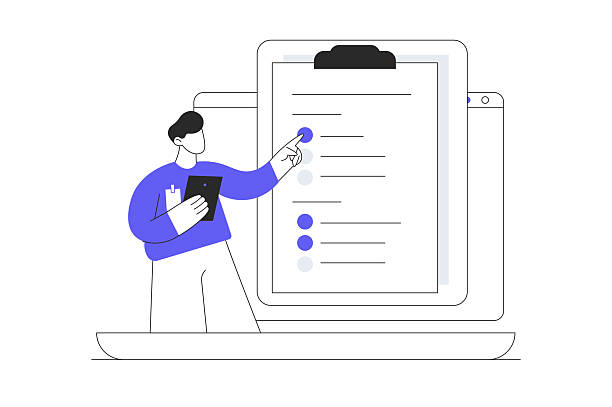
Even the best SEO-optimized website design may encounter errors that negatively impact its performance in search engines.
Timely identification and resolution of these errors are crucial for maintaining and improving SEO rankings.
This specialized section addresses the most common SEO errors and practical solutions for fixing them.
Awareness of these issues and how to deal with them will help you maintain a healthy and optimized website.
404 Errors (Page Not Found): This error occurs when a user or search engine tries to access a page that does not exist.
404 pages can disrupt user experience and waste SEO authority.
The guidance is to check the 404 error report via Google Search Console and fix broken internal links.
For external 404 pages linked from other sites, the best solution is a 301 redirect (permanent redirection) to a relevant page or the homepage.
Broken Links: Internal or external links that point to non-existent pages.
This problem not only harms UX but also can lead to wasted SEO authority.
Tools like Screaming Frog or specific WordPress plugins can help identify broken links.
Duplicate Content: When identical or very similar content exists across multiple URLs on your site or even on other sites.
Search engines get confused in choosing the original version, which harms your ranking.
Using Canonical tags, 301 redirects, or removing duplicate versions are the main solutions for dealing with this problem.
Mobile-Friendliness Issues: If your site is not optimized for mobile, it will not rank well in mobile search results.
Google’s Mobile-Friendly Test tool helps identify these problems.
Slow Site Speed: As previously mentioned, site speed is an important ranking factor.
Using PageSpeed Insights and GTmetrix tools is essential for diagnosing and resolving speed issues.
Improper Use of Title Tags (H1) and Meta Descriptions: These tags should be unique for each page and contain target keywords.
Failing to optimize them can lead to lost SEO opportunities.
Every SEO-optimized website design should have a regular plan for monitoring and correcting these errors.
Ignoring these issues can lead to a loss of organic traffic and search engine rankings.
Frequently Asked Questions
| Question | Answer |
|---|---|
| What does SEO-optimized website design mean? | Designing a website that, in addition to an attractive appearance, is technically and content-wise optimized to achieve a higher ranking in search engine results. |
| Why is SEO-optimized website design important? | It leads to increased organic traffic through search engines, improved business visibility, attracting more customers, and ultimately increasing sales. |
| What are the key elements in SEO-optimized website design? | Mobile optimization, high loading speed, quality and relevant content, correct use of keywords, proper URL structure, and use of title and meta tags. |
| What role does content play in website SEO? | Unique, valuable, informative content with target keywords plays a vital role in attracting users and achieving better rankings in search results. |
| What does Mobile-First Indexing mean? | A Google approach where the mobile version of a website is prioritized for indexing and ranking. Therefore, site responsiveness for mobile is essential. |
| How can website loading speed be improved? | Image compression, caching, optimizing CSS and JavaScript codes, using strong hosting, and activating Gzip compression. |
| What is the importance of keywords in SEO? | Keywords help search engines understand the topic of your page and link it to relevant user searches. |
| What role do Title Tags and Meta Descriptions play? | The title tag is the most important element in on-page SEO, and the meta description is a summary of the page content that encourages users to click. Both are displayed in search results. |
| How does Internal Linking help with SEO? | It helps search engines discover and index different pages of the site and distributes page value across different sections of the site. It also improves user experience. |
| What is the use of a Sitemap in SEO? | It is an XML file that provides a list of all important pages on the site to search engines to facilitate crawling and indexing of the site. |
And other services from Rasaweb Advertising Agency in the field of advertising
Smart Sales Automation: An effective tool to increase click-through rate with attractive UI design.
Smart Brand Identity: Professional optimization for digital branding using Google Ads management.
Smart Advertorials: An effective tool to increase click-through rate with intelligent data analysis.
Smart Google Ads: Transform campaign management with an SEO-driven content strategy.
Smart Marketing Automation: Professional optimization for digital branding using attractive UI design.
And over a hundred other services in the field of internet advertising, advertising consultation, and organizational solutions.
Internet Advertising | Advertising Strategy | Advertorial
Sources
Comprehensive SEO Guide
What is Responsive Design?
Keyword Research for SEO
Website Speed Optimization
Transform your business in the online world with Rasaweb Afarin Digital Marketing Agency; from fast website design to comprehensive SEO strategies.
📍 Tehran, Mirdamad Street, next to Bank Markazi, Kazeroun Jonoubi Alley, Ramin Alley No. 6



